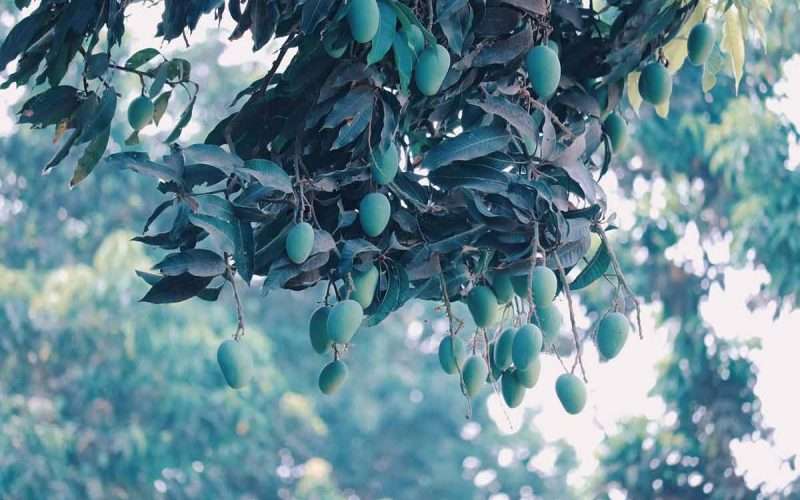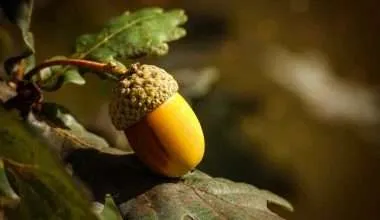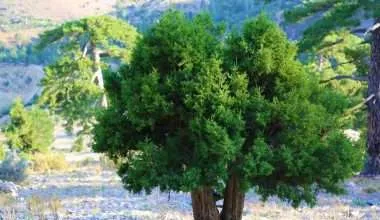Table of Contents Show
‘What is a full mango tree’s lifespan?’ I wondered as I ate my delicious mango sorbet last night. And that is what sent me down the mango path… figuratively of course! Before we begin to talk about the lifespan, what is a mango?
The mango is a fruit of South Asian origin, but one that has become very popular throughout the world. One of the major reasons for its popularity is the taste of the fruit itself. It is generally very sweet, although the unripe fruit has a sharp, sour taste.
Thanks to its taste, the mango is used in many desserts on its own or mixed with other ingredients to make some amazing dishes. So exactly how long does this fruit tree live?
Full mango tree lifespan and how to grow them
If you love the mango fruit, or the ‘mangifera indica’ as it is called, if you’d like to grow a mango tree from scratch, in your garden, then you need to read on!
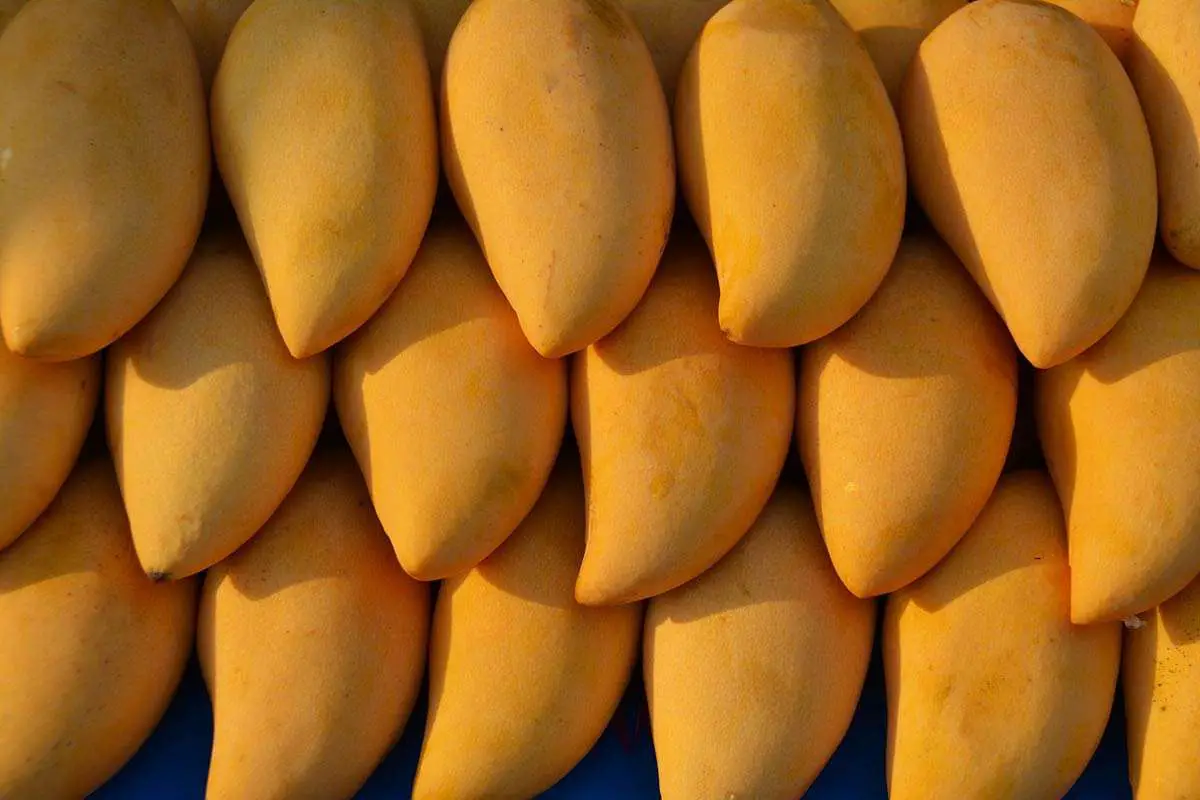
The mango tree life!
To date, the longest living mango tree on record is a 300 years old, mature tree in the East Khandesh region of India. It is still able to grow mangos… that very delicious fruit we all love! And while this is one on record, most research suggests that the average age of mango trees is at least a 100 years long.
The best part of all? The mango tree bears fruit almost up to the end of its life! So is that the average fruit yield of any mango tree is sure to be quite impressive also
Reflecting this trait, the tree itself is an evergreen tree and one whose leaves last for a significant amount of time. One of the most oft-cultivated, tropical fruits in the world, the mango has a lot to offer in the way of variety.
There are many different kinds of mangoes, mostly grown in South Asia, but more particularly in countries that lie in Southeast Asia. However, the most expensive, and uncommon variety of mangoes, Miyazaki, are mostly grown in the Japan region.
Given their different varieties, the lifespan of each subspecies of mango can vary from the others. Generally however, the lifespan of a mango tree remains at least a hundred years.
So how exactly can you grow mango trees that give you delicious fruits? Read on to find out how to grow these amazing fruit trees!
Growing your own mango
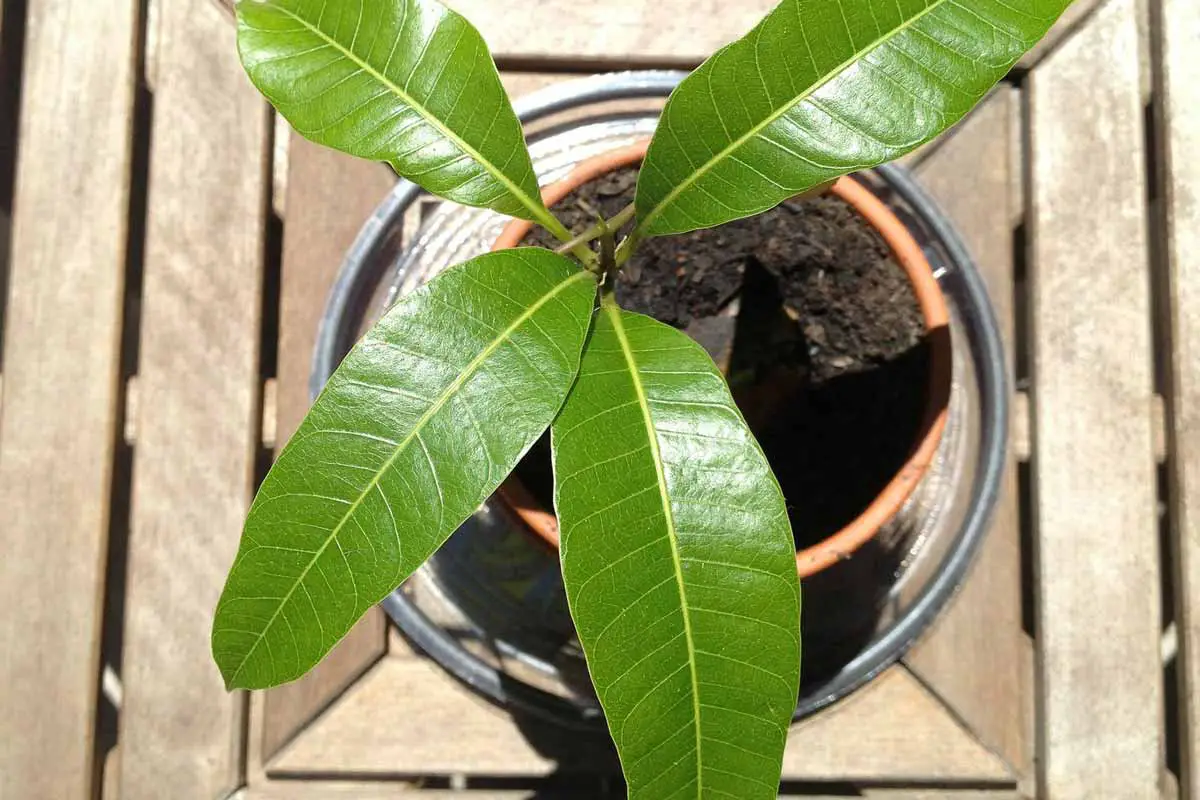
So this delicious, popular fruit, who wouldn’t want to have its young trees in their backyard? That said, how exactly can you have a growing mango tree in your garden?
Factors to watch out for
Well, right off the bat, it would be essential to understand that the mango tree is one tree that needs plenty of sunshine, and a hot and humid climate to grow in.
That said, it would be nearly impossible to grow it in a cold region or anywhere below the USDA hardiness zone 8 and below. USDA zone 9 and above have the ideal weather conditions to grow your own mango tree.
The optimal temperature guidelines state that the mango tree must be grown in areas where temperatures do not fall below 20 degrees Fahrenheit. The areas where the tree is being grown should also not experience frost at any time of the year as frost will damage the tree.
This indicates that Hawaii, Florida, California and any regions along the Gulf of Mexico are the best for growing your own mangoes.
Further, if you do decide to grow it in a flowering pot and try to give it the optimal conditions for growth, you will end up at a stage in the life of the tree where you must place your mango plant in the ground.
Planting a mango seed into a small pot and expecting it to eventually bear fruit, is a little too much.
Steps to planting your own mango tree
If you have managed to take care of the climatic restrictions, here are the steps you need to follow to grow your own mango tree. There are two ways to grow your own young tree: either plant a seed or grow the mango tree using a mango sapling.
1. Squeeze out the seed
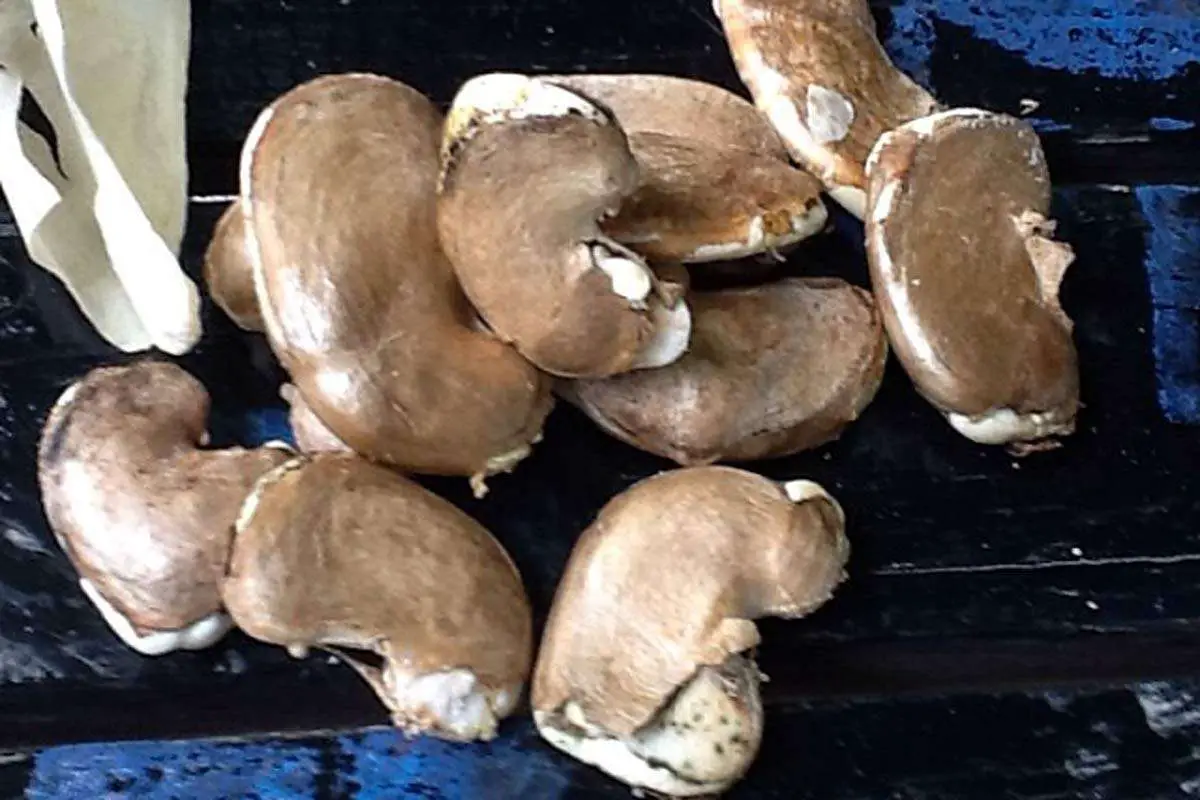
If you are going to start off with planting the seed, then you need to take a fresh mango, cut it open to remove the mango skin, and pulp. Discard the skin, and since you are as big of a mango enthusiast as I am, eat up the pulp. It’s delicious.
The next thing to do is to cut open the pit or husk. This is the ‘hairy’ structure you found nesting between the mango pulp. While it is often mistaken for being the mango seed, this is not the case.
Cut open the pit using a scissors or kitchen knife. Be careful to not damage the seed inside of the pit. This is the seed you will eventually be planting to grow your tree.
You must squeeze it out of the husk very gently. Once that is done, discard the husk.
2. Leave overnight in water
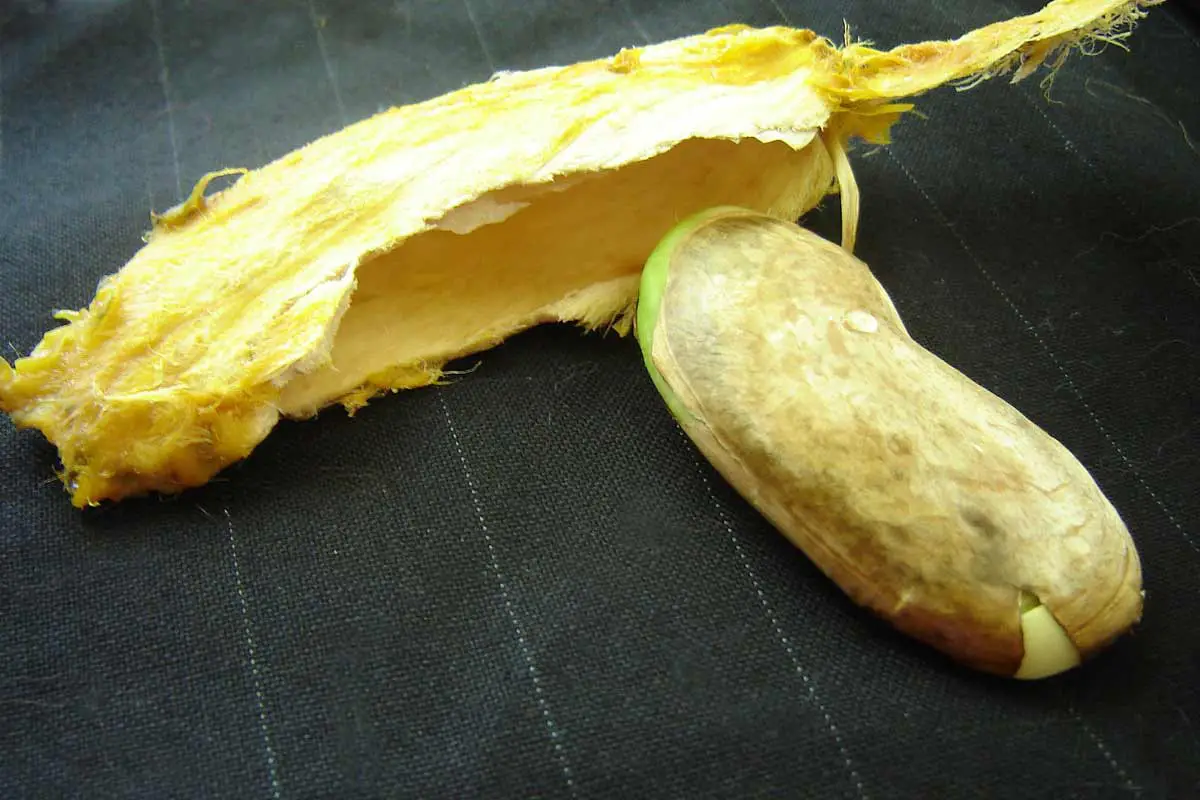
Gently remove any extra coating that may be around the seed. Then place it in a water container. Leave the seed for at least 24 hours. This will help the seed to germinate faster.
3. Germinate the seed.
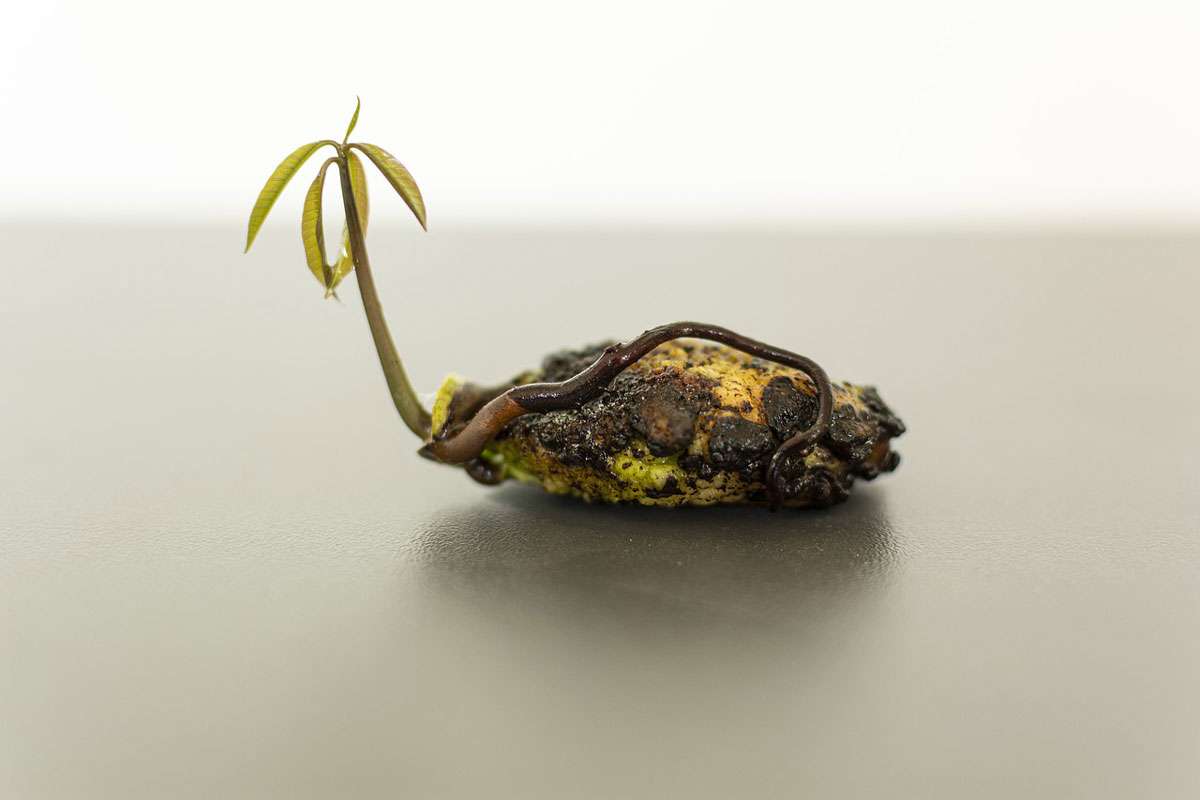
Remove the seed from the water and then wrap it up in a wet paper towel and place it inside an airtight bag.
Wait for the seed to sprout. At this point, you must be careful that you do not leave your seed inside the airtight bag for too long. Check the seed every couple of days or so to make sure that this does not happen.
4. Plant the seed in potting soil.
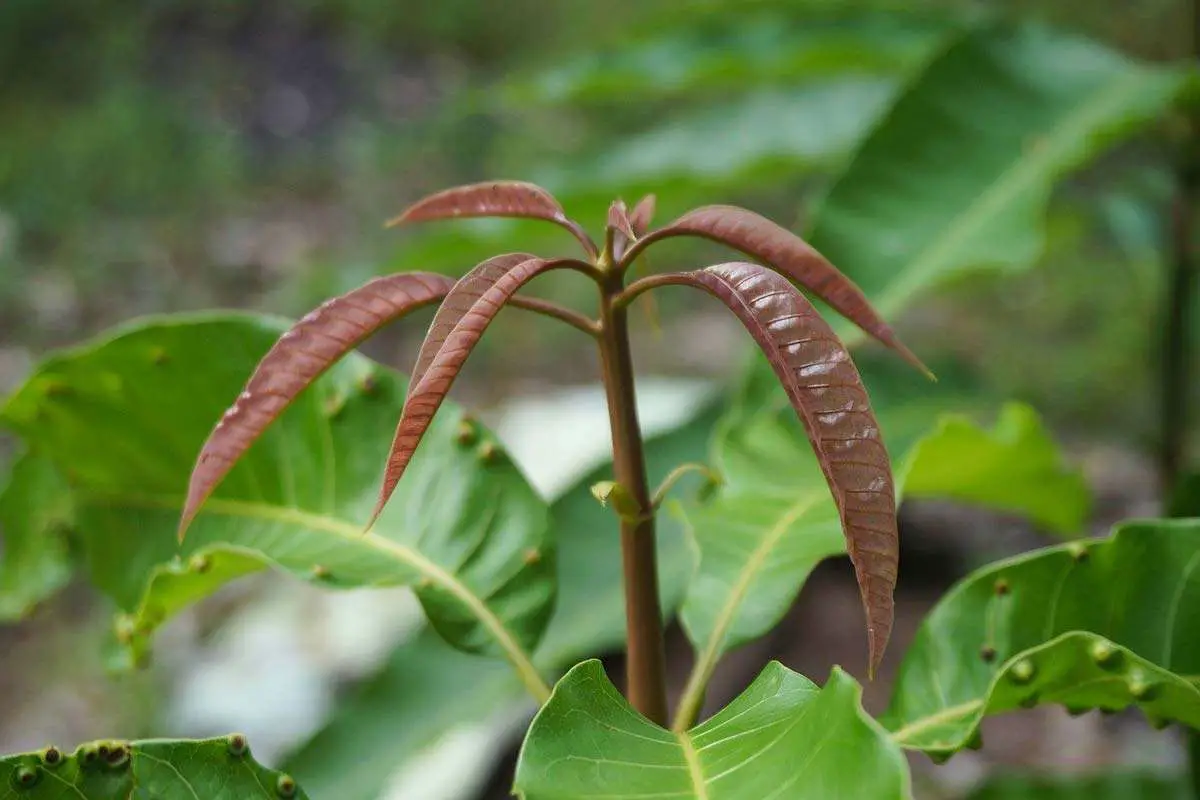
Once the seed has sprouted, place it in potting soil. Make sure to not cover the leaves of your seedling with soil. Also, ensure that the soil you are using has a high nitrogen content so that it can assist the seedling to grow better.
The mango is not a citrus fruit, but it needs almost the same high protein diet that citrus fruits do. And in plant terminology, protein translates as high nitrogen content in the soil. So use a good nitrogen fertilizer!
5. Let it grow.
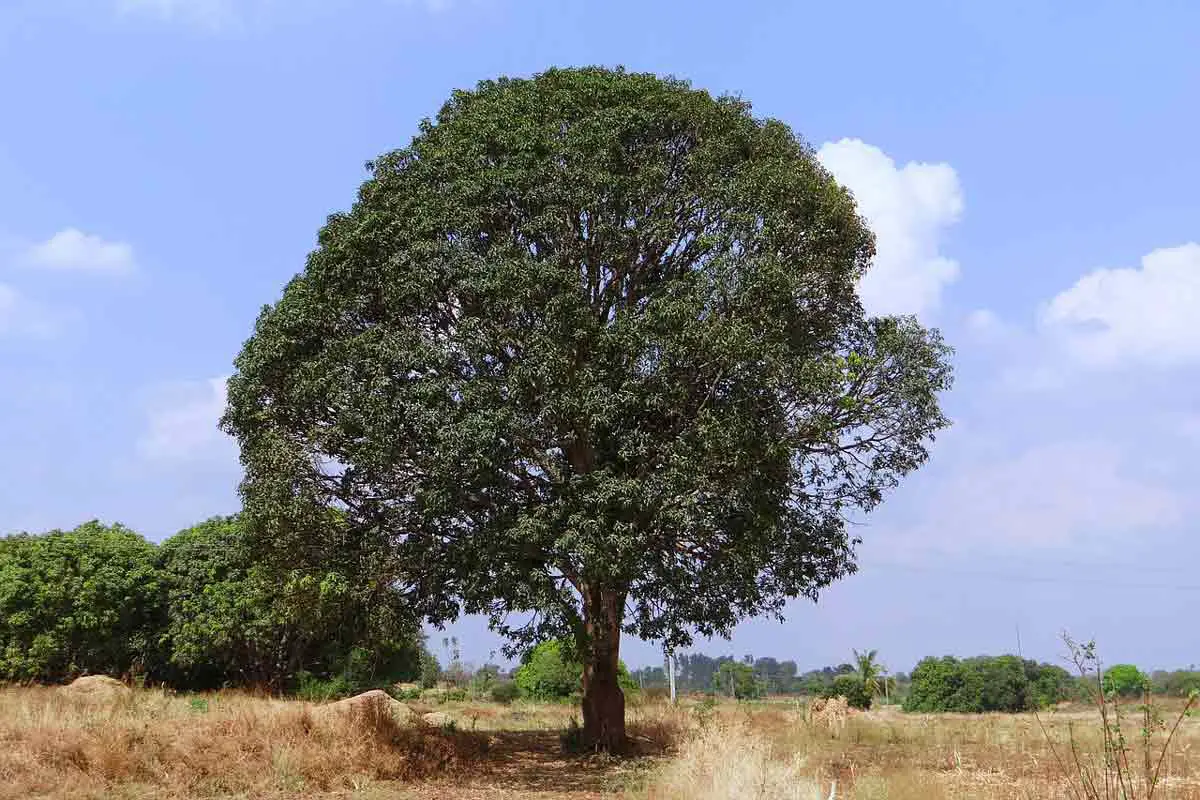
Now all you have to do is wait, and this is of course the hardest part. I’m not going to read you my sermon on patience at this point, but heads up!
Mango plants grown from mango seeds take between five to eight years to become mature trees before they begin to produce fruit. Feel free to look at the soil now and again if it helps!
If you start off with a store-bought sapling instead, then you could skip all the previous steps and get straight to the last one, planting it into the ground.
6. Replant into the ground
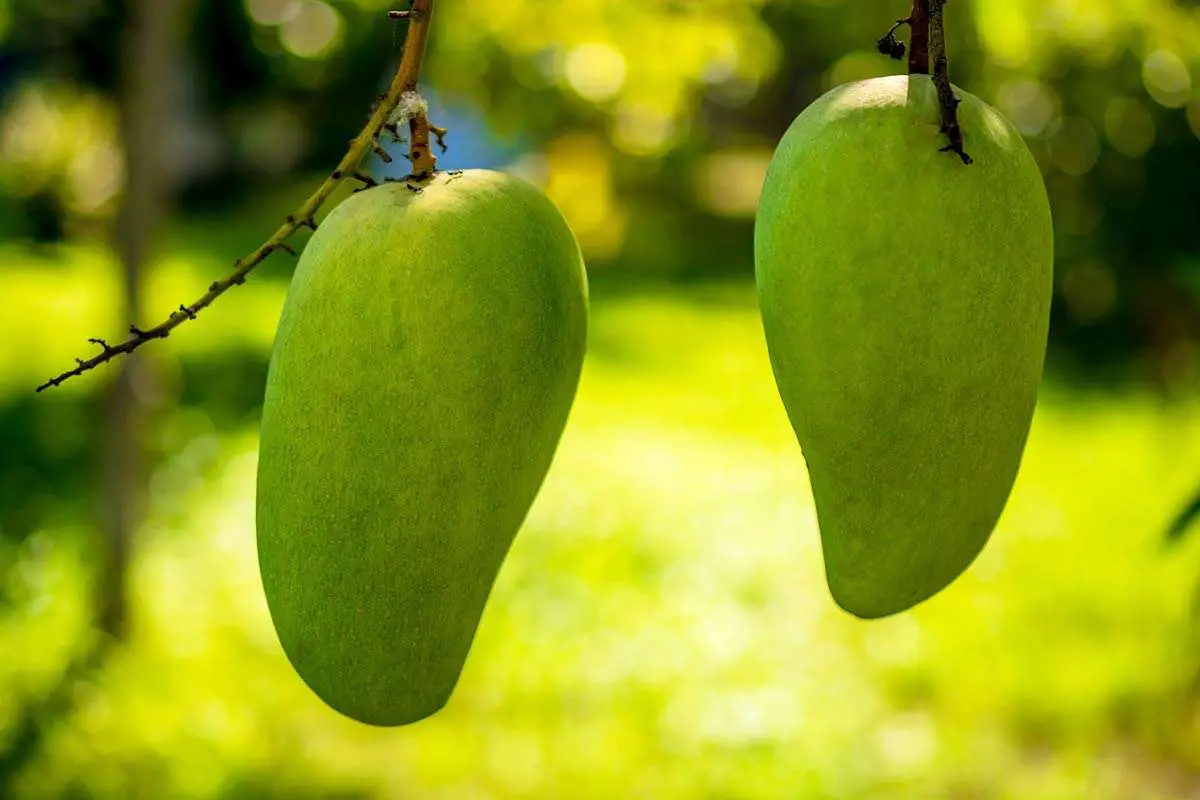
Once your young mango plant is big enough, which would mean that it is at least twelve to fifteen inches tall, plant it into the soil and watch it grow further.
Again, it is best to remember that even mango plants that are grown from seedlings need at least five years before they are able to be mature enough to bear fruit.
Watch out for your seedling
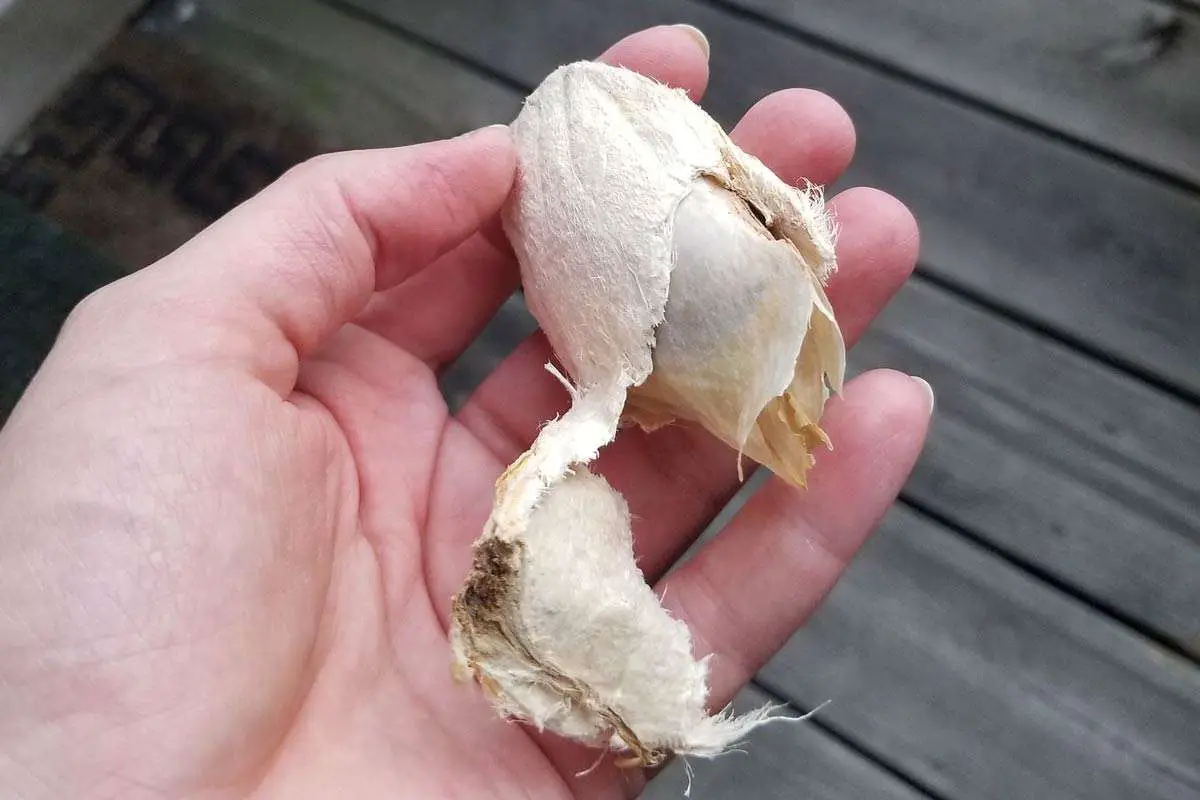
You know how they say that the reward of patience is sweet? Well, I think they must have been talking out planting your mango seeds, or seedlings, and then waiting for the fruit. In any case, don’t give up hope at this point, but continue to cultivate your sapling carefully so that you will have an amazing tree within a few years.
Mango plants are dependent on their environment and surroundings to grow, so here are some things that you really need to watch out for:
1 Cover the roots carefully.
Cover the seedling roots very carefully. It would be a good idea to use some shredded mulch at this point. You can use three to four inches of mulch all around the base of your mango tree to create a sort of insulation for your plant’s roots.
2 Ensure no stray roots are left exposed to freezing temperatures.
Be very careful when you are covering the roots. No stray root should be allowed to escape your mulch layer as this will expose the root to the cold temperatures. Since the mango is a tropical fruit, this could be very harmful for the mango seedling.
3 Cover up all cracks in the base of your soil.
When you are creating your mulch layer, whether at the time when you are planting your seedling or small mango plant into the ground, or later on when you are fertilizing it, ensure that no cracks appear in the soil layer.
Fill in cracks with new soil before you continue to build up your mulch layer.
Letting your mango tree mature
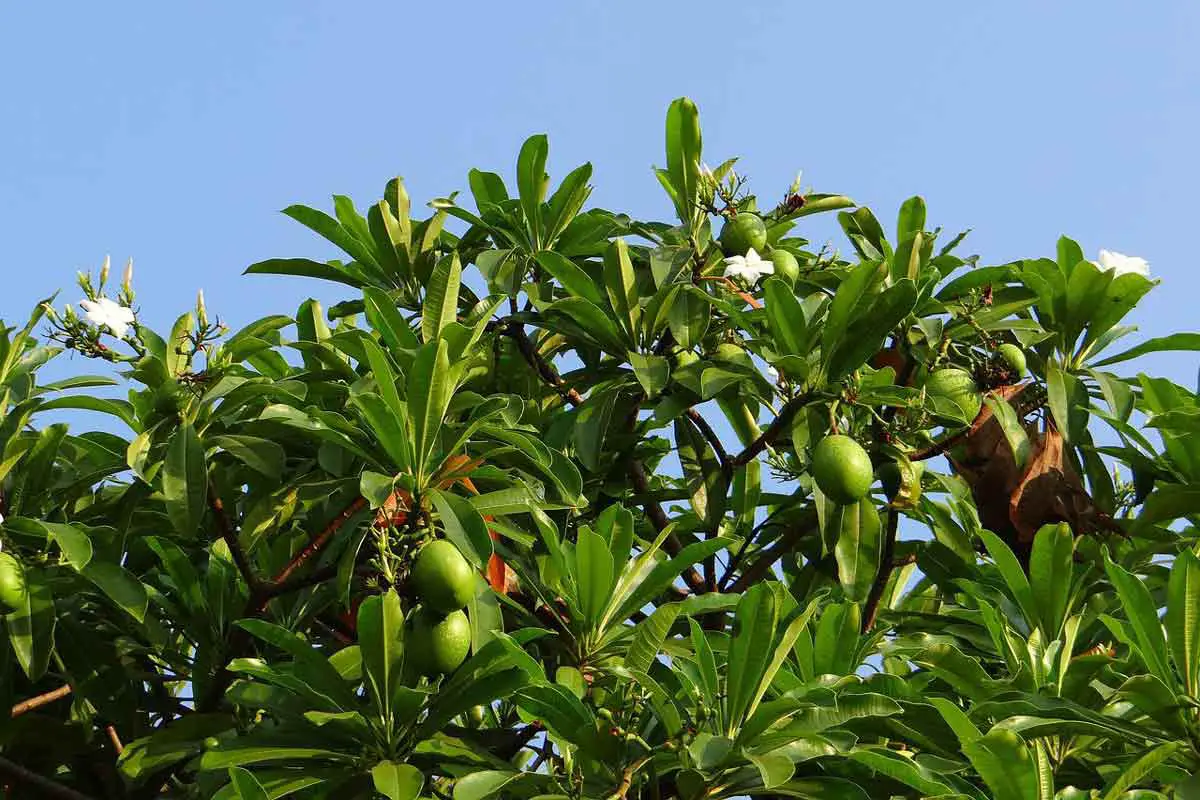
Let’s face it, to grow mango trees and wait for them to start to flower, then produce fruits is not for the impatient. It is a labor of love and hard work and care… the list goes on. It is for this reason that you need to make some smart choices.
Get a sapling rather than starting to grow your mango tree from a seed so that you are able to cut down your waiting time by almost half. Remember, saplings, given the right care, will flower, and then fruit within four to five years of planting.
Saplings are already a few years old by the time they are sold so that will help you reach your goal of producing your own fruit faster.
Mangoes also come in many varieties so make sure that you know which kind you are interested in growing before starting off the whole process.
For the rest of it, mangoes are amazing trees, given their long lifespans as well as their ability to flower and bear fruit almost up to the end of their lives. This means that yes, the initial wait is hard, but the rest of it should be fun.
Some fun facts about mangoes
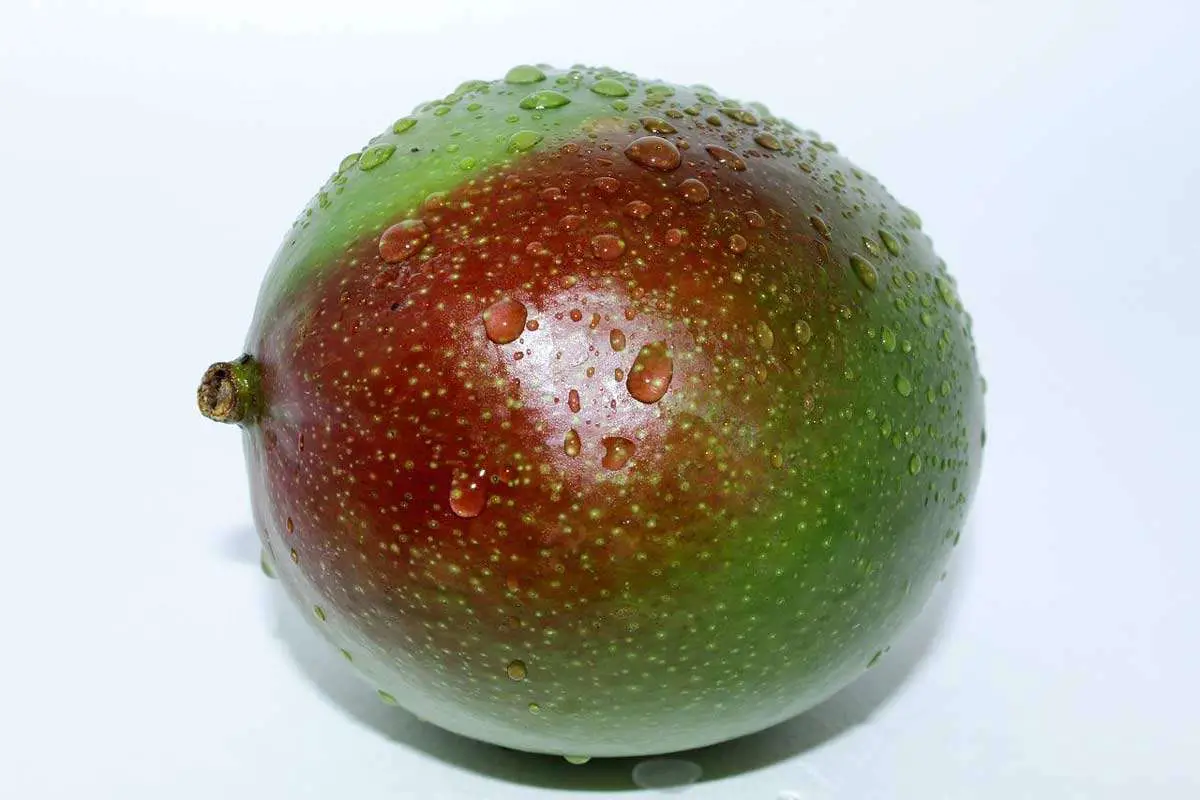
So, now that we have got everything on mangoes, how about ending this on a fun, high note. Read on, to give yourself the motivation and zest you will need to go into mango cultivation!
- Mango farming, you know, is not for the faint of heart… and that has nothing to do with how long the mango fruit production takes.
Japan produces the most expensive mangoes in the world. Unique, ruby-colored and delicious, the Miyazaki mangoes are sold as Taiyo no Tamogo. Their cost, back in 2019, was over $50 a piece. And it’s only become more expensive since.
- Then again, do politics and mangoes go together? Apparently yes! Especially when you are dealing with Southeast Asian countries like Bangladesh, India and Pakistan where mangoes initially originate from.
Mangoes are used as diplomatic gifts of goodwill and are sent as a part of the public diplomacy practiced by the diplomatic missions of the sending-country. Studies indicate Pakistan is being a dominant player in the global arena.
- And finally, mangoes can be used to make many delicious dishes. With unripe mangoes taste the best of savory flavors: mango pickles, chutneys or just add some raw mango to your dish to give it an added kick of tangy sourness.
Another way you could do it is to turn the ripe mango into a delicious dessert… a mango fruit salad, mango sticky rice or, what started this article in the first place… a yummy, mango sorbet.
